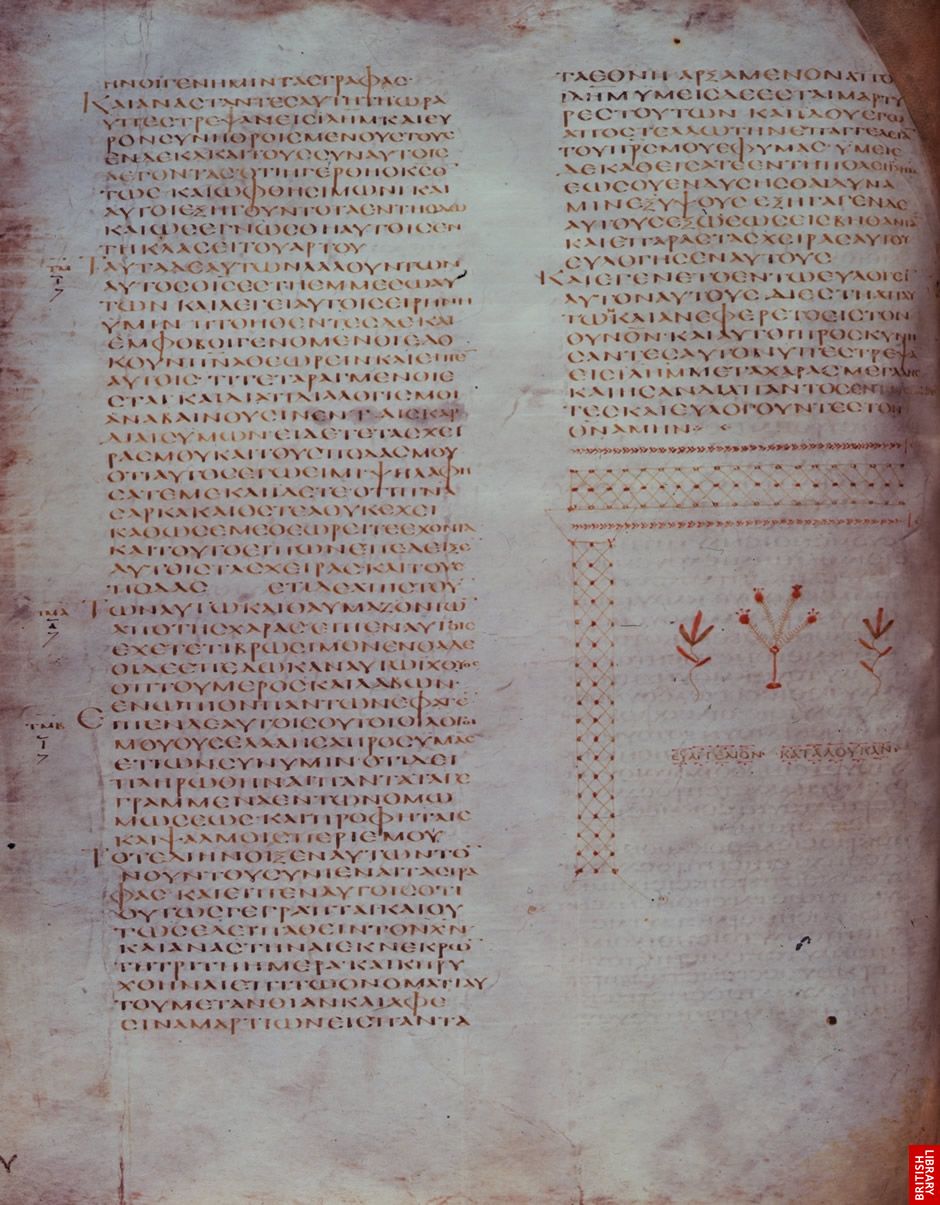Codex Alexandrinus, 5th century CE
Codex Alexandrinus
Codex Alexandrinus, Constantinople or Asia Minor, fifth century. End of St Luke’s Gospel
Codex Alexandrinus is one of the three earliest and most important manuscripts of the entire Bible in Greek, the others being Codex Sinaiticus, also in the British Library, and Codex Vaticanus in Rome. It is therefore of enormous importance in establishing the biblical text. It is also one of the earliest books to employ significant decoration to mark major divisions in the text.
manuscripts of the entire Bible in Greek, the others being Codex Sinaiticus, also in the British Library, and Codex Vaticanus in Rome. It is therefore of enormous importance in establishing the biblical text. It is also one of the earliest books to employ significant decoration to mark major divisions in the text.
The Codex Alexandrinus contains the Septuagint (the Koine Greek version of the Old Testament) and the New Testament, in addition to a few additional pieces of text that do not appear in standard Bibles, such as part of the Epistles of Clement. The beginning lines of each book are written in red ink and sections within the book are marked by a larger letter set into the margin. Words are written continuously in a large square uncial hand with no accents and only some breathing marks. It contains 773 pages, 630 for the Old Testament and 143 for the New Testament. Each page measures 32cm x 26.5 cm.
within the book are marked by a larger letter set into the margin. Words are written continuously in a large square uncial hand with no accents and only some breathing marks. It contains 773 pages, 630 for the Old Testament and 143 for the New Testament. Each page measures 32cm x 26.5 cm.
On the left-hand page shown here, the end of the Gospel of St Luke is marked by a tailpiece (a distinctive ornamental panel) with stylised decoration. Similar tailpieces accompany the titles of each of the books of the Bible throughout the manuscript.
This manuscript is named after the capital of Greek Egypt, Alexandria. The city was one of the great centres of the learning in the ancient world, and its library held the world’s greatest collection of manuscripts. However, the library and all its contents were destroyed in a wartime fire in 642.
The first we know of the Codex Alexandrinus was when it formed part of the patriarchal library at the beginning of the 14th century, although its whereabouts before that are unknown. Since then it has a tradition of regal ownership- in 1627 Cyril Lucar, Patriarch of Constantinople and a former Patriarch of Alexandria, presented it to King Charles I of England. As part of the Royal Library it made its way into the British Museum, and then the British Library. It had a narrow escape in 1731 when Ashburnam House caught fire- it survived, thanks to the quick thinking of Dr Bentley of the Cotton Library, who took it to safety.
British Library- Codex Alexandrinus
See also-




